I was fortunate to arrive home in time to help photograph Grand Rapids’ Day of the Dead celebration, now in its second year. This event aims to reconnect immigrants and their children with the history and traditions of Mexico, history that many people coming from tiny ranches or towns never learned. The Day of the Dead, loosely associated with All Saints Day and Halloween, is much more than either. It reflects the indigenous understanding of death and life in a continuous circle of life, and not something to prompt great sadness or hushed tones. In addition, it’s necessary to maintain connection with the spirit of one’s departed loved one through offerings of the relative’s favorite food and drink, to exhibit their photo, and to celebrate their life on an ofrenda or altar.
The celebration started on Sunday at 2pm with a parade down Cesar Chavez Street to Roosevelt Park, where a large tent was erected and free food of traditional Mexican foods were offered — tamales, sweetbread, and coffee. Vendors were prohibited in a spirit of keeping the celebration purely focused on history and tradition. Music bands played, educational talks given, faces painted, and finally a competition for the best catrina costume. Catrina refers to a character thought up by Jose Guadalupe Posadas in Mexico City in the 19th C. to protest French cultural dominance at the time. Read about him here: https://communityaltar.wisc.edu/jose-guadalupe-posada-and-the-famous-catrina/
Several hundred people turned out to the celebration, overwhelming the space and available food. But in a typical Mexican spirit of accommodation, no one complained. People made room for each other and shared what was available. Next year, try to come to the celebration if you are able. It is much closer to the heart of Mexico and its people than any of the downtown festivals put on by the city.
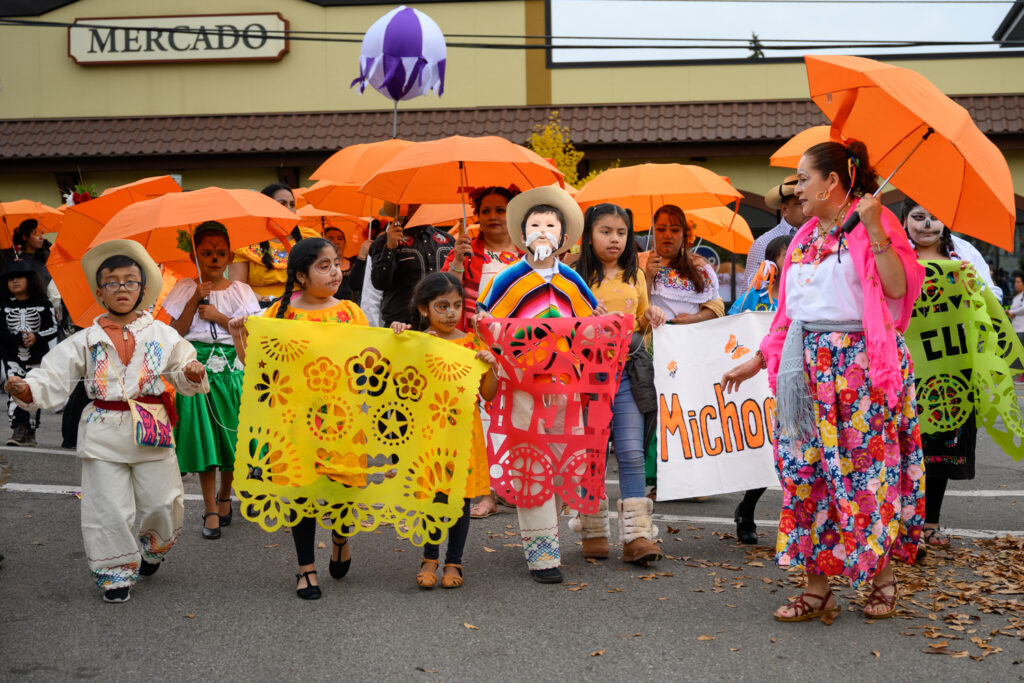
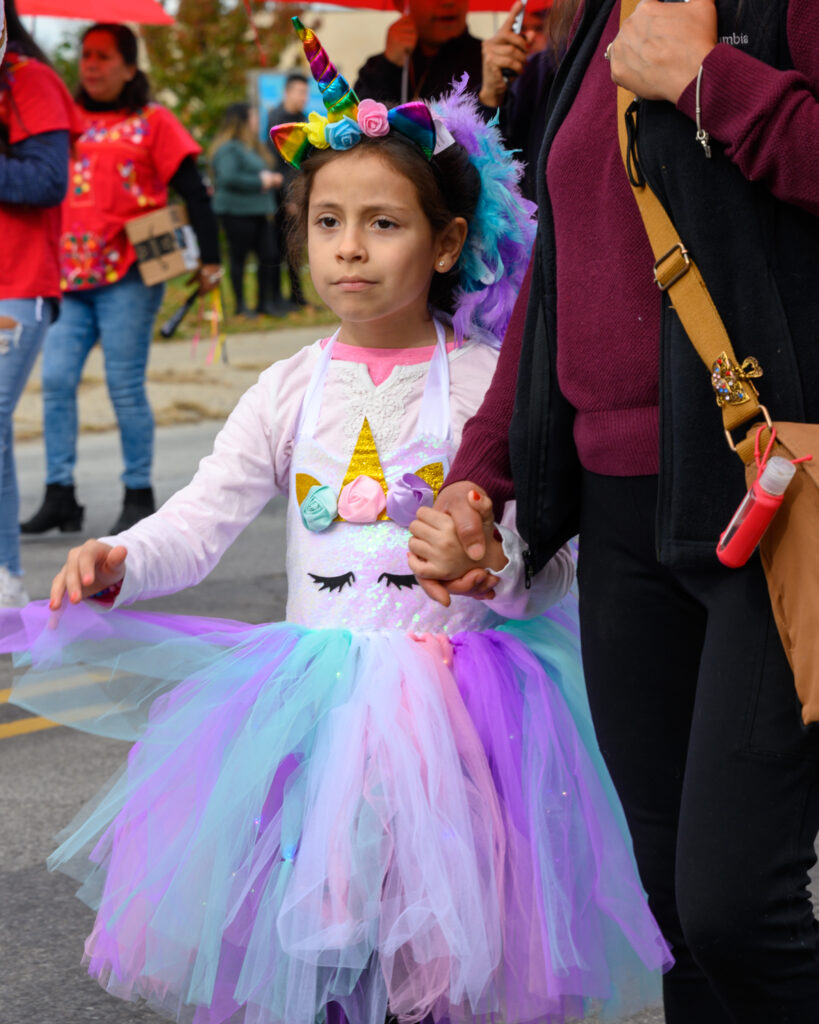

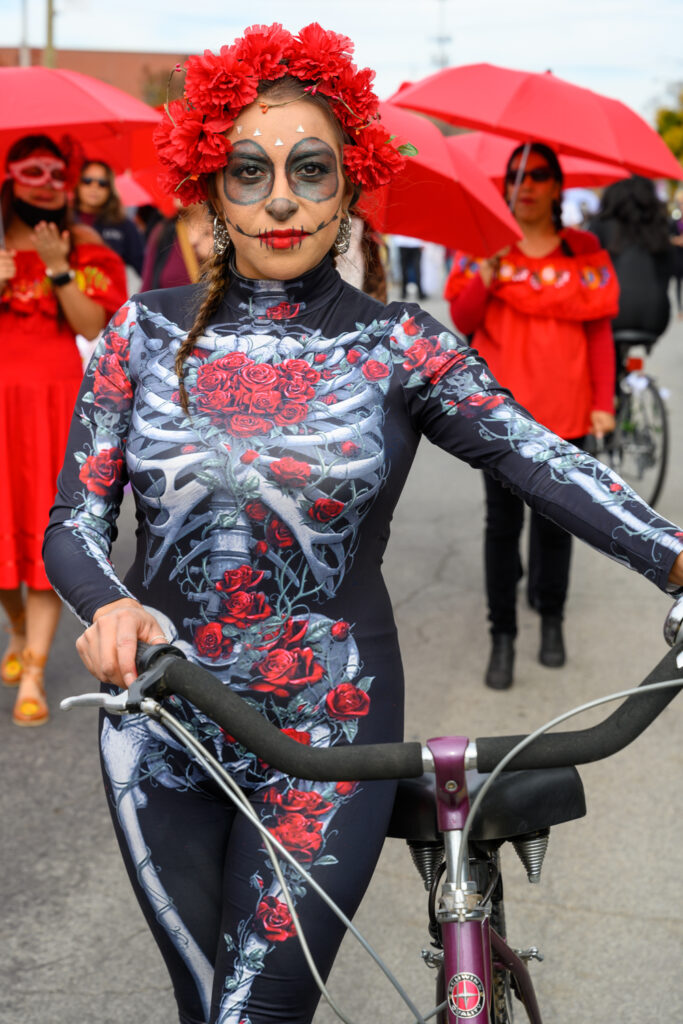
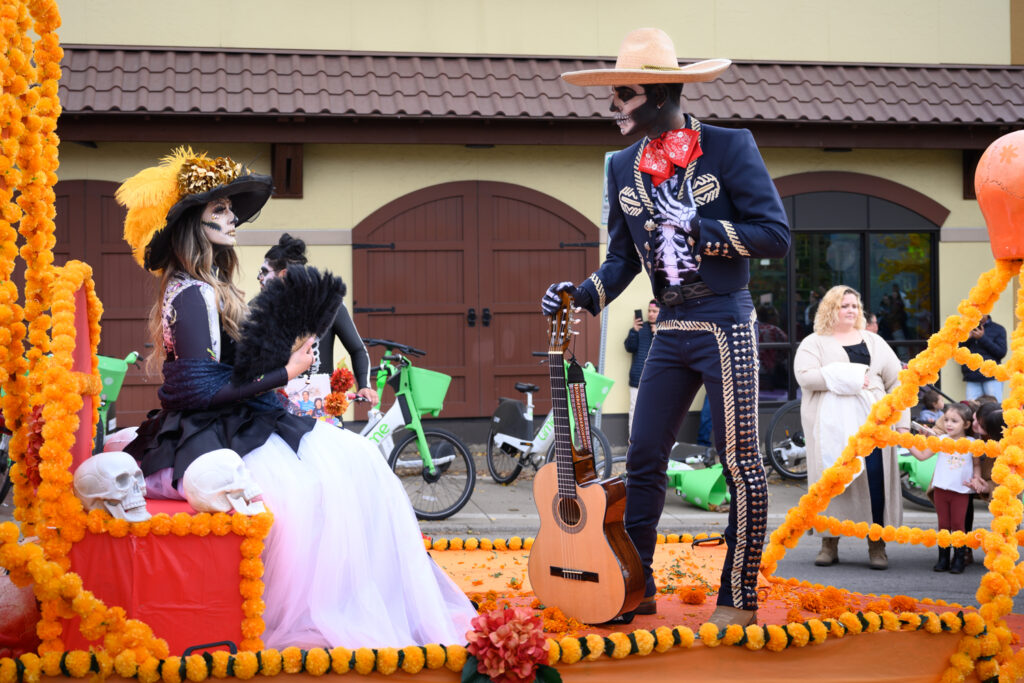
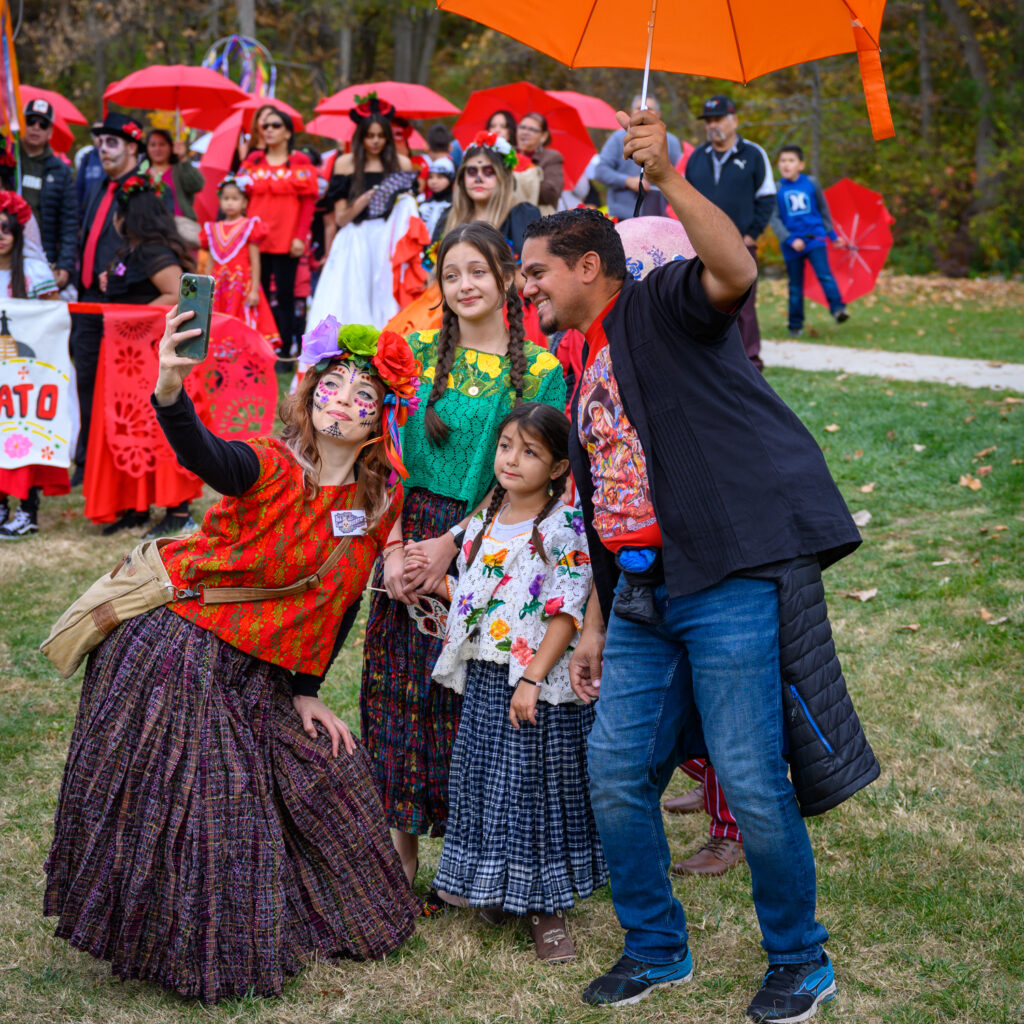
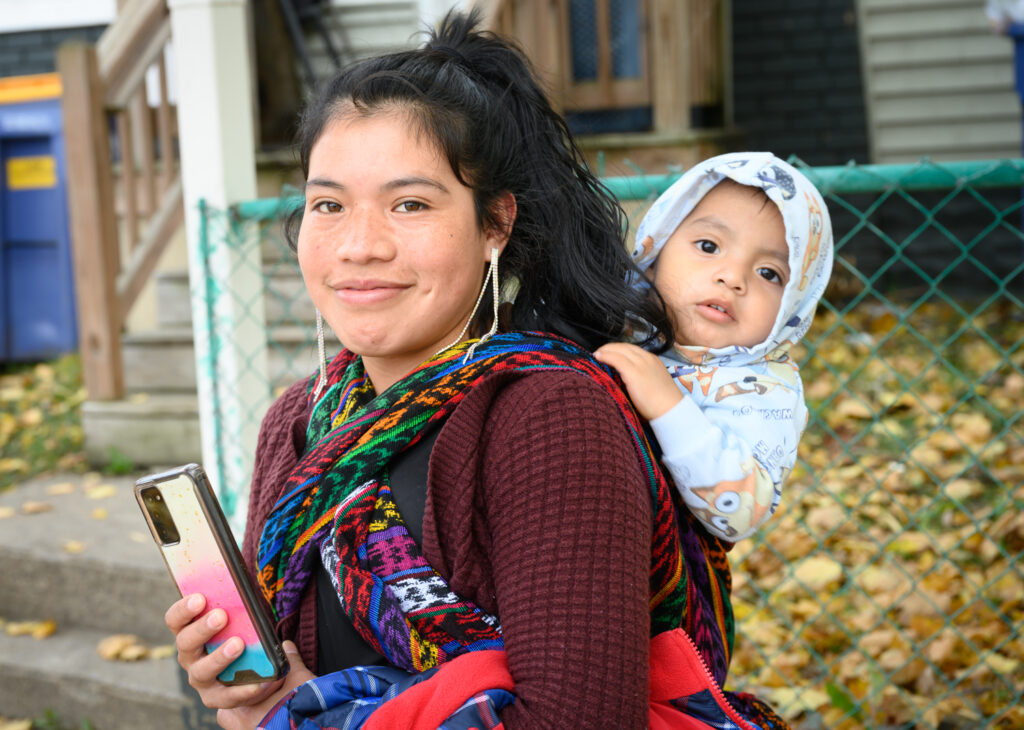

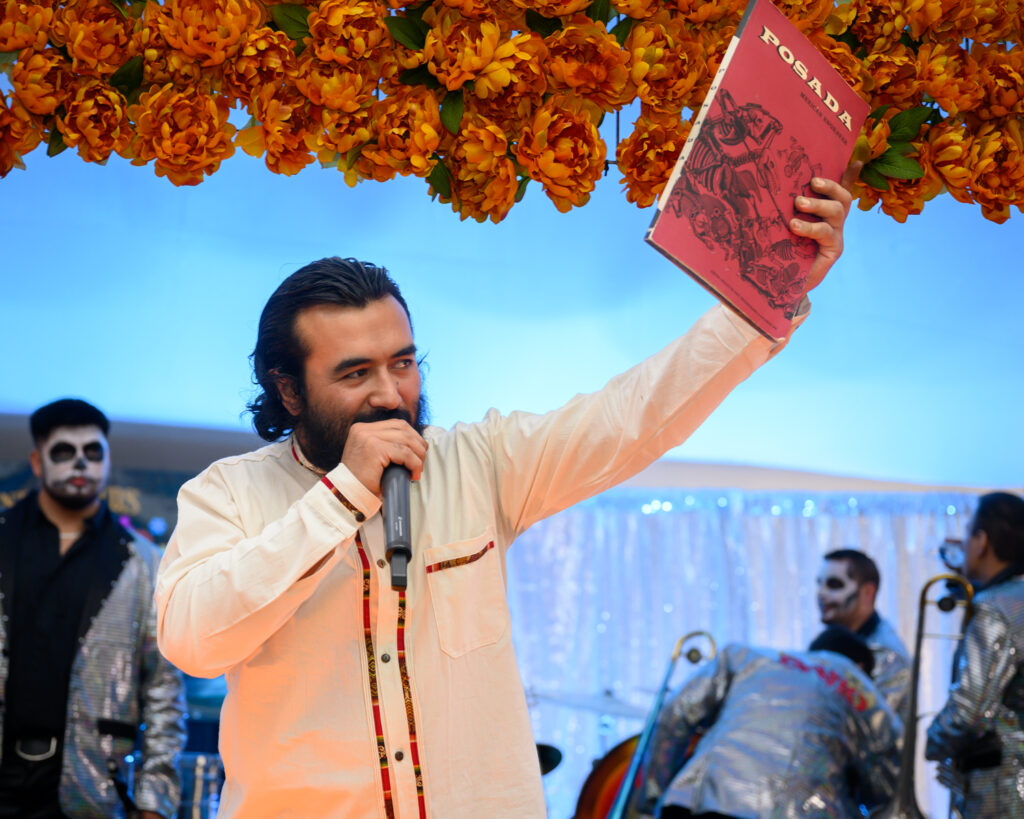



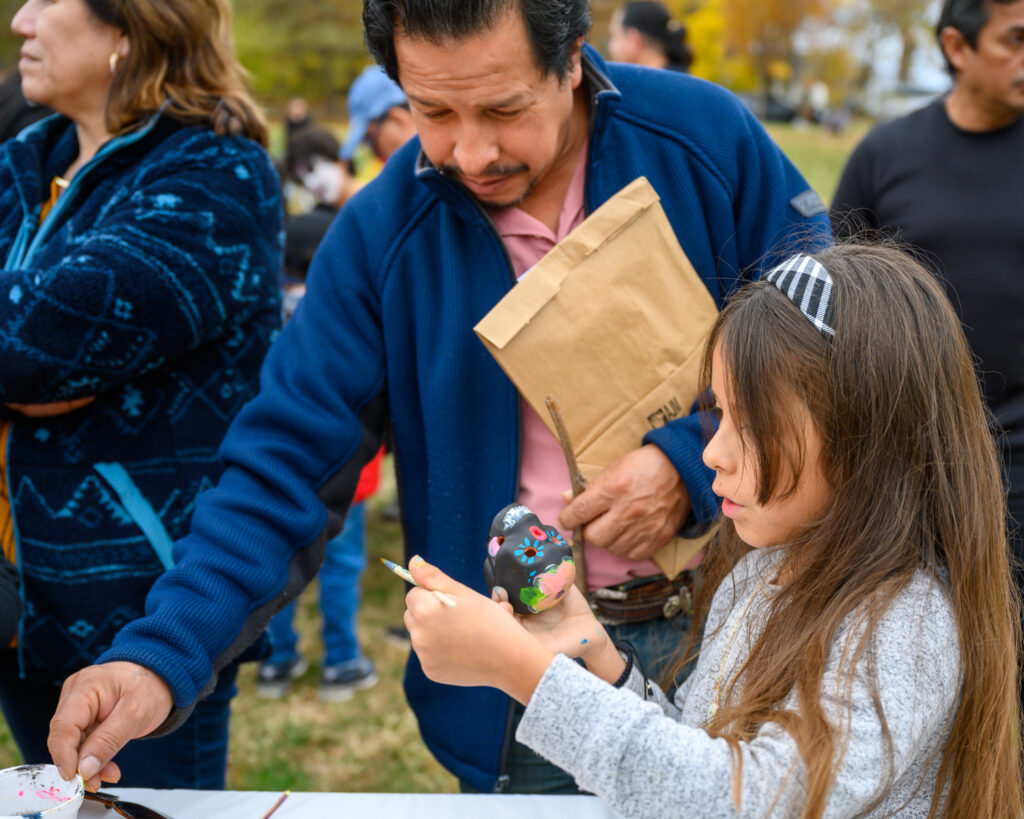

Wonderful descriptions, photos, background info. Being unable to speak Spanish inhibits me from participating, but I like to have cross-cultural experiences.
I think people are pretty accommodating and much was done bilingually. Some Latin Americans’children no longer speak adequate Spanish to have the whole thing in Spanish.
I love these wonderful costumes!
They really reflect Mexican culture that we Americans don’t always get to see.